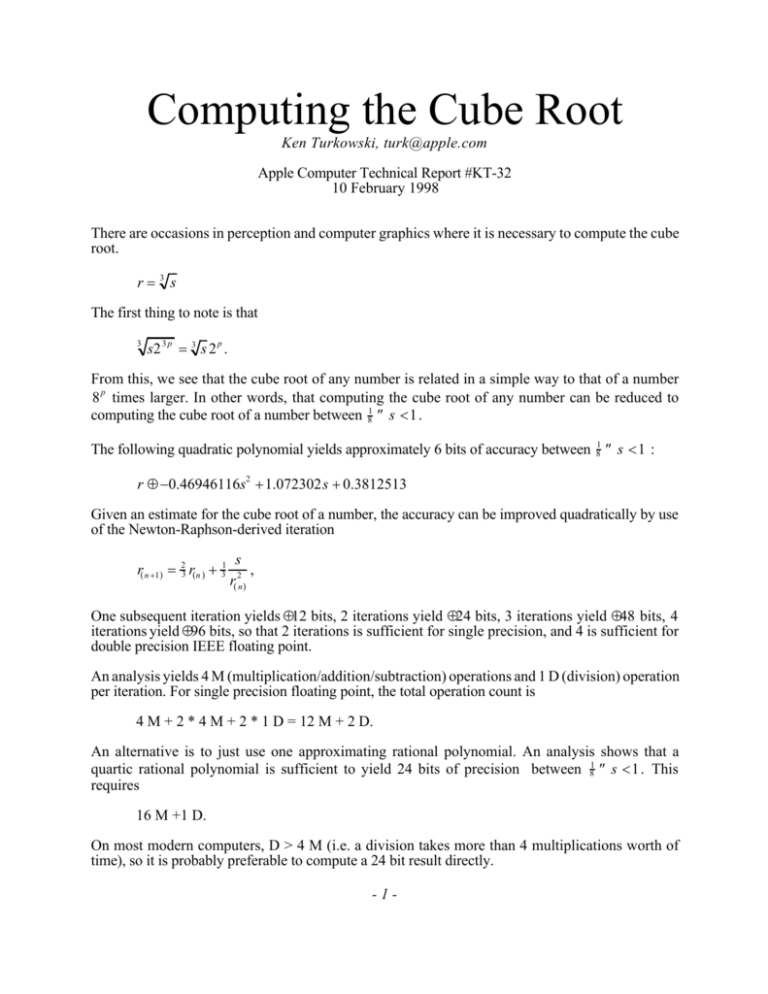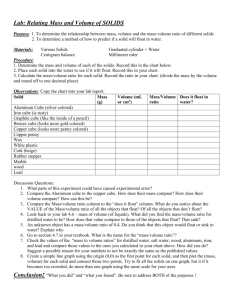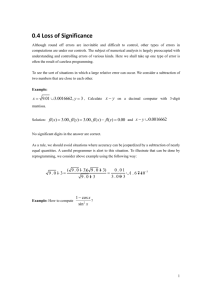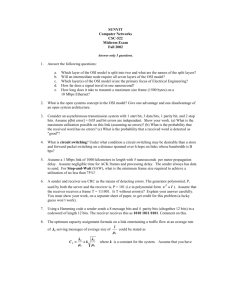Computing the Cube Root
advertisement

Computing the Cube Root
Ken Turkowski, turk@apple.com
Apple Computer Technical Report #KT-32
10 February 1998
There are occasions in perception and computer graphics where it is necessary to compute the cube
root.
r=3 s
The first thing to note is that
3
s2 3 p = 3 s 2 p .
From this, we see that the cube root of any number is related in a simple way to that of a number
8 p times larger. In other words, that computing the cube root of any number can be reduced to
computing the cube root of a number between 81 ≤ s <1.
The following quadratic polynomial yields approximately 6 bits of accuracy between 81 ≤ s <1 :
r ≈ −0.46946116s2 +1.072302s + 0.3812513
Given an estimate for the cube root of a number, the accuracy can be improved quadratically by use
of the Newton-Raphson-derived iteration
r( n +1) = 23 r(n ) + 31
s
,
r(2n)
One subsequent iteration yields ≈12 bits, 2 iterations yield ≈24 bits, 3 iterations yield ≈48 bits, 4
iterations yield ≈96 bits, so that 2 iterations is sufficient for single precision, and 4 is sufficient for
double precision IEEE floating point.
An analysis yields 4 M (multiplication/addition/subtraction) operations and 1 D (division) operation
per iteration. For single precision floating point, the total operation count is
4 M + 2 * 4 M + 2 * 1 D = 12 M + 2 D.
An alternative is to just use one approximating rational polynomial. An analysis shows that a
quartic rational polynomial is sufficient to yield 24 bits of precision between 81 ≤ s <1. This
requires
16 M +1 D.
On most modern computers, D > 4 M (i.e. a division takes more than 4 multiplications worth of
time), so it is probably preferable to compute a 24 bit result directly.
-1-
C Implementation
#include <fp.h>
/* or <math.h> */
float CubeRoot(float x)
{
float fr, r;
int ex, shx;
/* Argument reduction */
fr = frexp(x, &ex);
/* separate into mantissa and exponent */
shx = ex % 3;
if (shx > 0)
shx -= 3; /* compute shx such that (ex - shx) is divisible by 3 */
ex = (ex - shx) / 3;
/* exponent of cube root */
fr = ldexp(fr, shx);
/* 0.125 <= fr < 1.0 */
#ifdef ITERATE
/* Compute seed with a quadratic qpproximation */
fr = (-0.46946116F * fr + 1.072302F) * fr + 0.3812513F;/* 0.5<=fr<1 */
r = ldexp(fr, ex);
/* 6 bits of precision */
/* Newton-Raphson iterations */
r = (float)(2.0/3.0) * r + (float)(1.0/3.0) * x
r = (float)(2.0/3.0) * r + (float)(1.0/3.0) * x
#else ITERATE
/* Use quartic rational polynomial with error <
fr = ((((45.2548339756803022511987494 * fr +
192.2798368355061050458134625) * fr +
119.1654824285581628956914143) * fr +
13.43250139086239872172837314) * fr +
0.1636161226585754240958355063)
/
((((14.80884093219134573786480845 * fr +
151.9714051044435648658557668) * fr +
168.5254414101568283957668343) * fr +
33.9905941350215598754191872) * fr +
1.0);
r = ldexp(fr, ex);
/* 24 bits of precision
#endif
return(r);
}
-2-
/ (r * r); /* 12 bits */
/ (r * r); /* 24 bits */
2^(-24) */
*/







